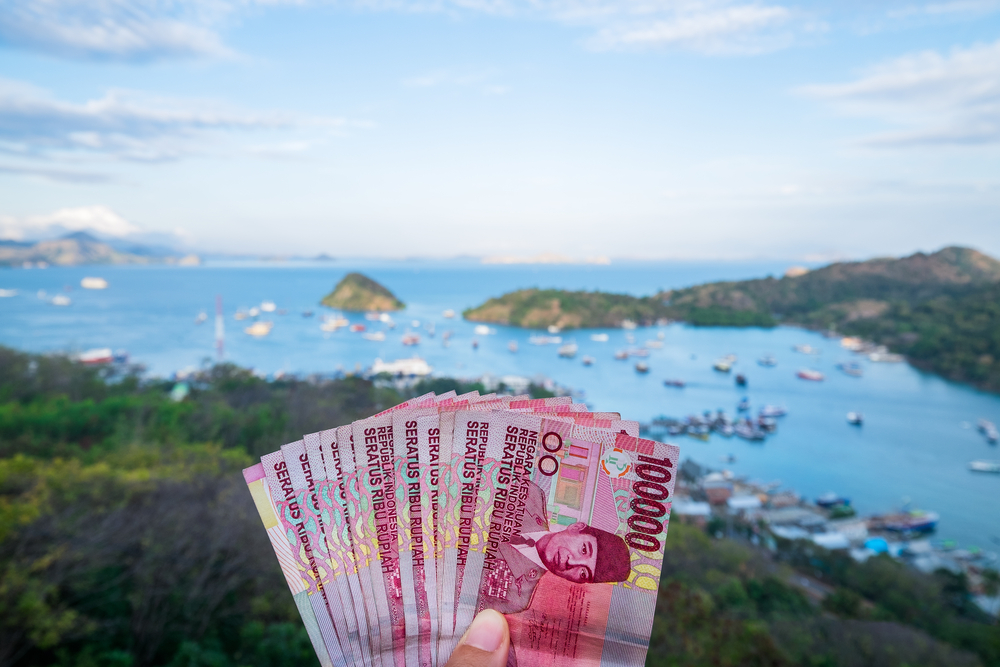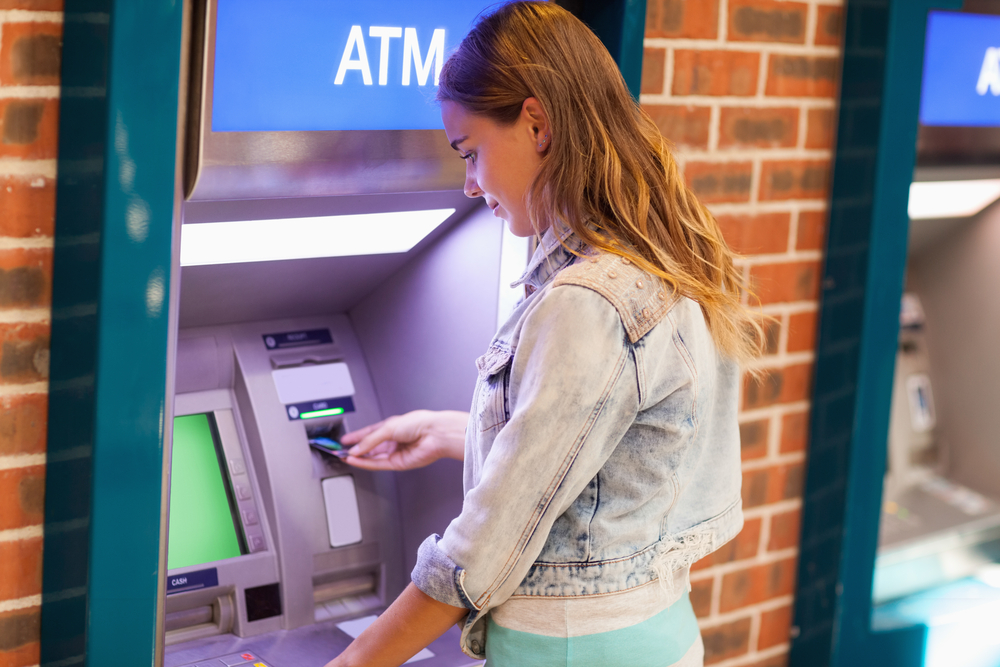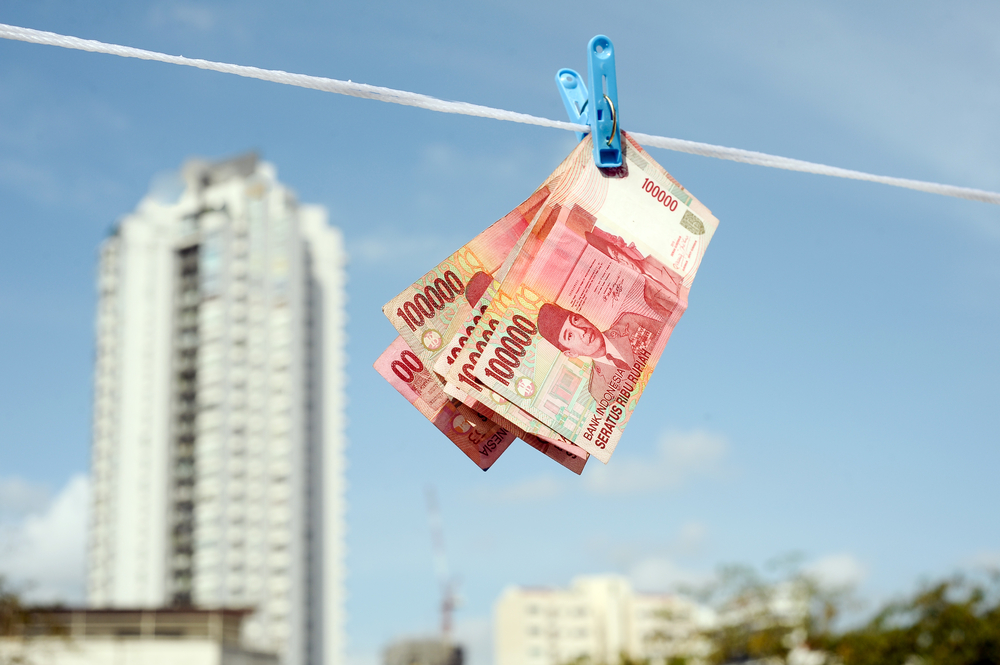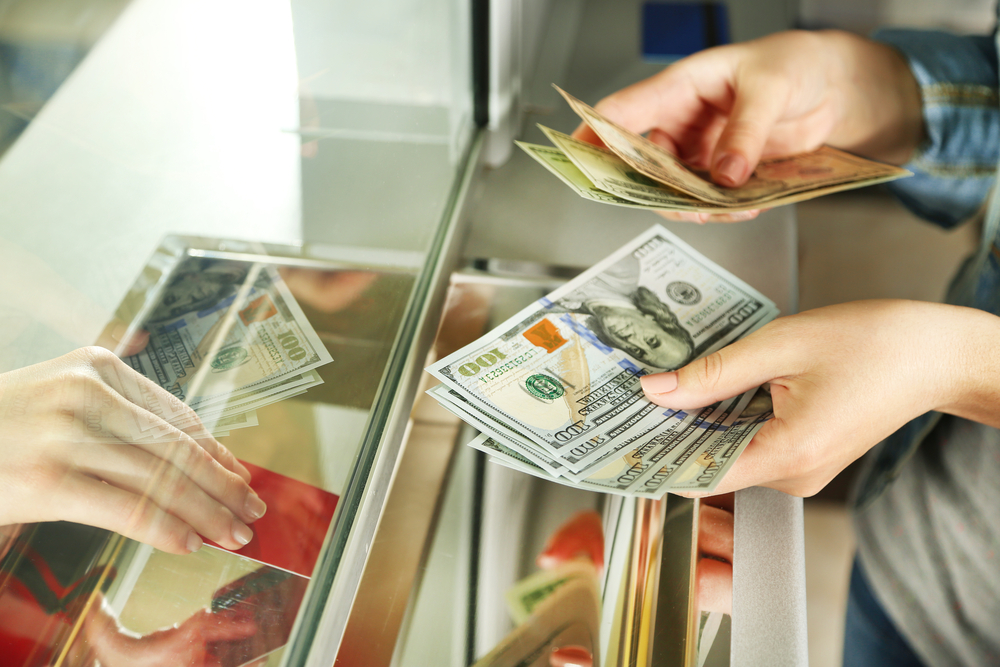What’s Bali’s currency?
Bali uses Indonesian Rupiah (IDR) as its currency. It’s a good idea to take enough for at least your first few days in Bali, so you can arrange transport from the airport and keep yourself fed and housed until you can withdraw more cash. $100 USD per person should be enough – but how much is that in IDR?

What’s the exchange rate for Indonesia Rupiah?
Use the following converter to work out the exchange rate between your home currency and Indonesian Rupiah:
Tips and tricks for withdrawing, using and exchanging money in Bali
Withdrawing money is generally easy in Bali, especially in the southern region. Popular areas like Kuta, Seminyak, and Ubud have ATMs and currency exchange kiosks on every corner, so accessing your cash in Bali should be no trouble.
But what about the other regions of the island? Are there any places where it’s difficult to find an ATM and, if so, what can you do about it? And what about those transaction fees – is there any way to cut the cost of withdrawing cash abroad?
Read on for our top tips and tricks for withdrawing, using and exchanging money in Bali.
Withdrawing money in Bali

Withdrawing money in Bali is easy in the south, as there are ATMs everywhere in the popular tourist spots. Bank fees and transaction charges can add up, however, which can eat into your budget if you aren’t careful. So how can you keep costs down when withdrawing money on the island, and is there anywhere you might struggle to find an ATM?
Withdraw as much as possible each time you visit the ATM
If you use an ATM in Bali, you’ll be charged an international transaction fee. This can cost anything up to $5 USD, not including any extra fees your bank may charge you.
The international transaction fee is usually a fixed amount and is the same whether you withdraw $50 or $500. To avoid paying the fee over and over again, withdraw as much money as you can each time you visit the ATM. Just remember to keep your money safe and securely locked up during your trip, and don’t walk around with large amounts of cash on you.
If you’re travelling outside of Bali’s southern region…

Although ATMs are easy to find in the south, other regions of Bali may not have places to withdraw cash. This is especially true of the northern regions, even in touristy spots like Amed and Tulamben. Think you can pay with your credit card? Don’t be so sure! Although many hotels and restaurants in the south accept credit card payments, this method of payment is usually not available in smaller towns. If you’re travelling off the beaten path in Bali, it’s a good idea to plan accordingly and make sure you have plenty of cash with you.
Using a travel card in Bali
In many cases, loading up a travel card and using that to withdraw cash is a good way of avoiding excessive ATM fees. Unfortunately, although this may work well in other countries it isn’t a cost-effective option in Bali and the ATM fees will still apply.
However, carrying a travel card in Bali is a good idea nonetheless. If there is a problem with your regular debit or credit card, you’ll be thankful to have another way of withdrawing money!
Exchanging money in Bali
Currency exchange shops are easy to find in Bali’s popular travel destinations, so changing your home currency to IDR is simple. However, be careful about which services you use, as Bali is notorious for exchange scams!

How to avoid currency exchange scams in Bali
If it seems too good to be true, it probably is!
When looking for somewhere to exchange money in Bali, you’ll notice that most shops have similar rates. Every now and then, however, you may notice a kiosk with incredible rates that are way more generous than everywhere else. Don’t hurry to hand over your money though – this is a trick to lure in tourists and you may find yourself leaving with a lot fewer Rupiah than you bargained for.
So, how does this scam work?
Most dodgy exchange shops will con you with a simple sleight-of-hand trick. The cashier will usually count out the money in front of you before handing it to you in an envelope. When you get out of the shop and count your money, however, you may notice you have quite a bit missing. This is because the cashier will slip a wad of notes back into the till before giving you the rest – sneaky!
How can you avoid falling victim to a currency exchange scam?
- Avoid shops with unusually generous exchange rates
- Calculate how much you should receive before you go in
- Ask about any extra fees and charges
- Count your money before leaving the shop and don’t hand it back to the cashier after you have done so!
Do’s and don’ts for using money in Bali
DO: Carry cash as often as possible
Although it’s possible to pay with your credit card in hotels and restaurants down south, this service is not universally available. It is always advisable to have cash on you, especially if you’re travelling outside of Bali’s southern region.

DO: Carry clean, crisp notes
If you want to exchange money in Bali, make sure you have crisp clean notes with you. Some exchange places will refuse bills that are dirty or crumpled or will offer you a lower exchange rate for them.
Do: Break those big bills
ATMs will often dispense money in 100,000 Rupiah notes (worth approximately $7 USD). These can be difficult for small businesses to change, especially if you are travelling to small towns and rural areas. It’s a good idea to break those big bills as soon as possible to avoid difficulties. The best places to do this are convenience stores like Coco Mart or Circle K, where you can stock up on 50,000 and 20,000 IDR notes.
DON’T: Forget your card!
ATMs in Bali will dispense your cash before they return your card. This can throw a lot of people and many walk off before they’ve collected their card! Make sure you have everything with you before you leave to avoid unnecessary stress during your trip.
